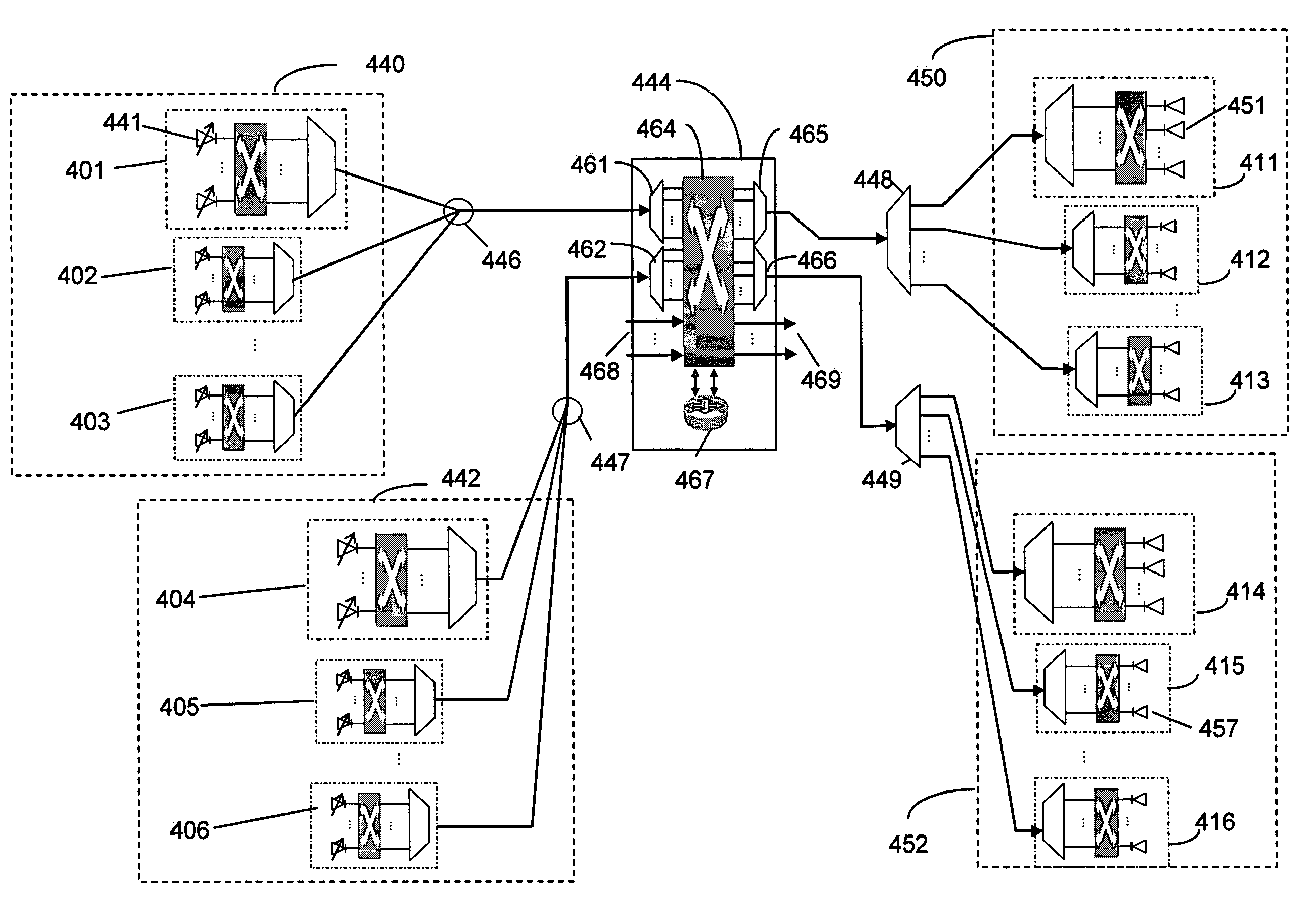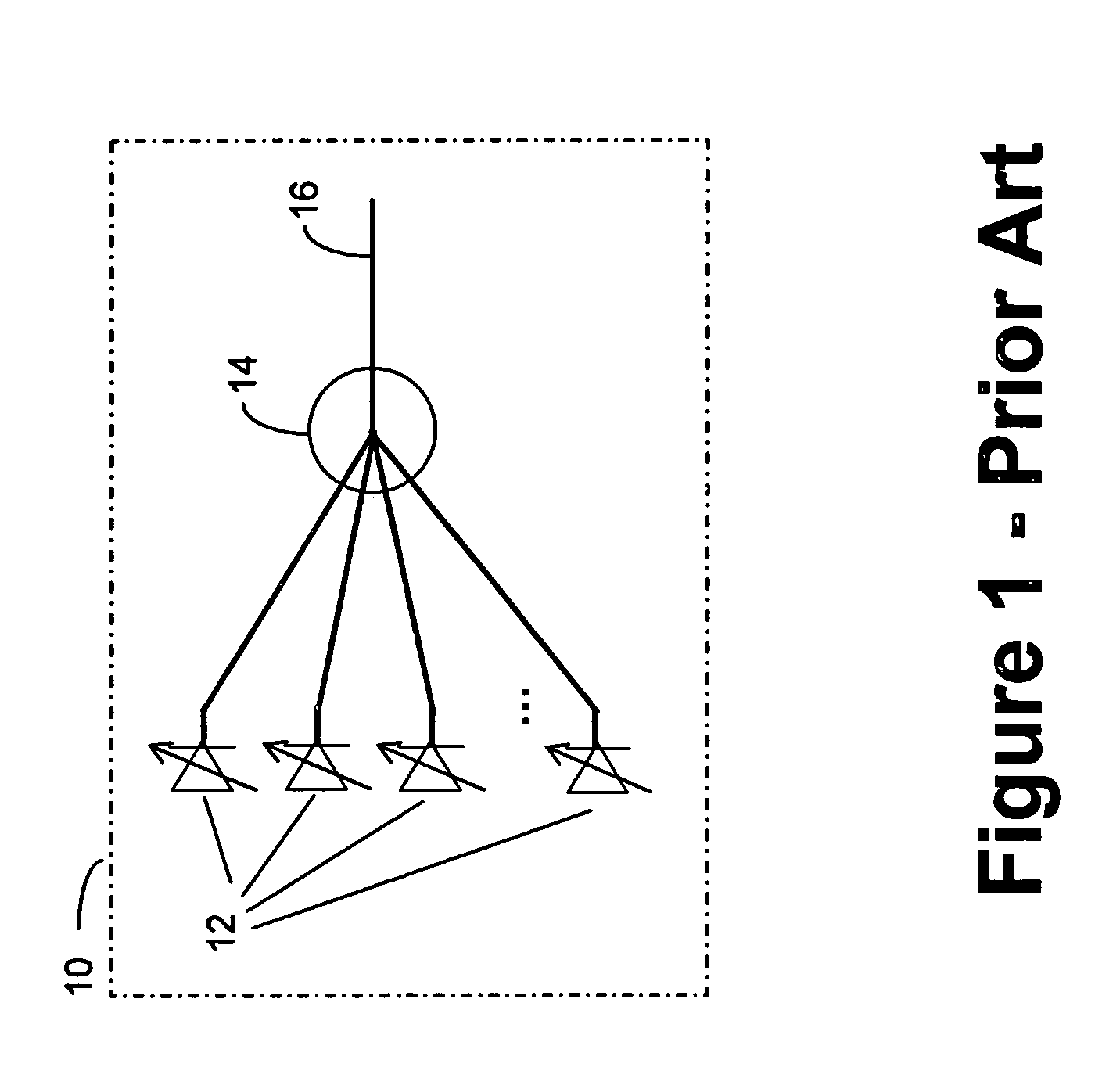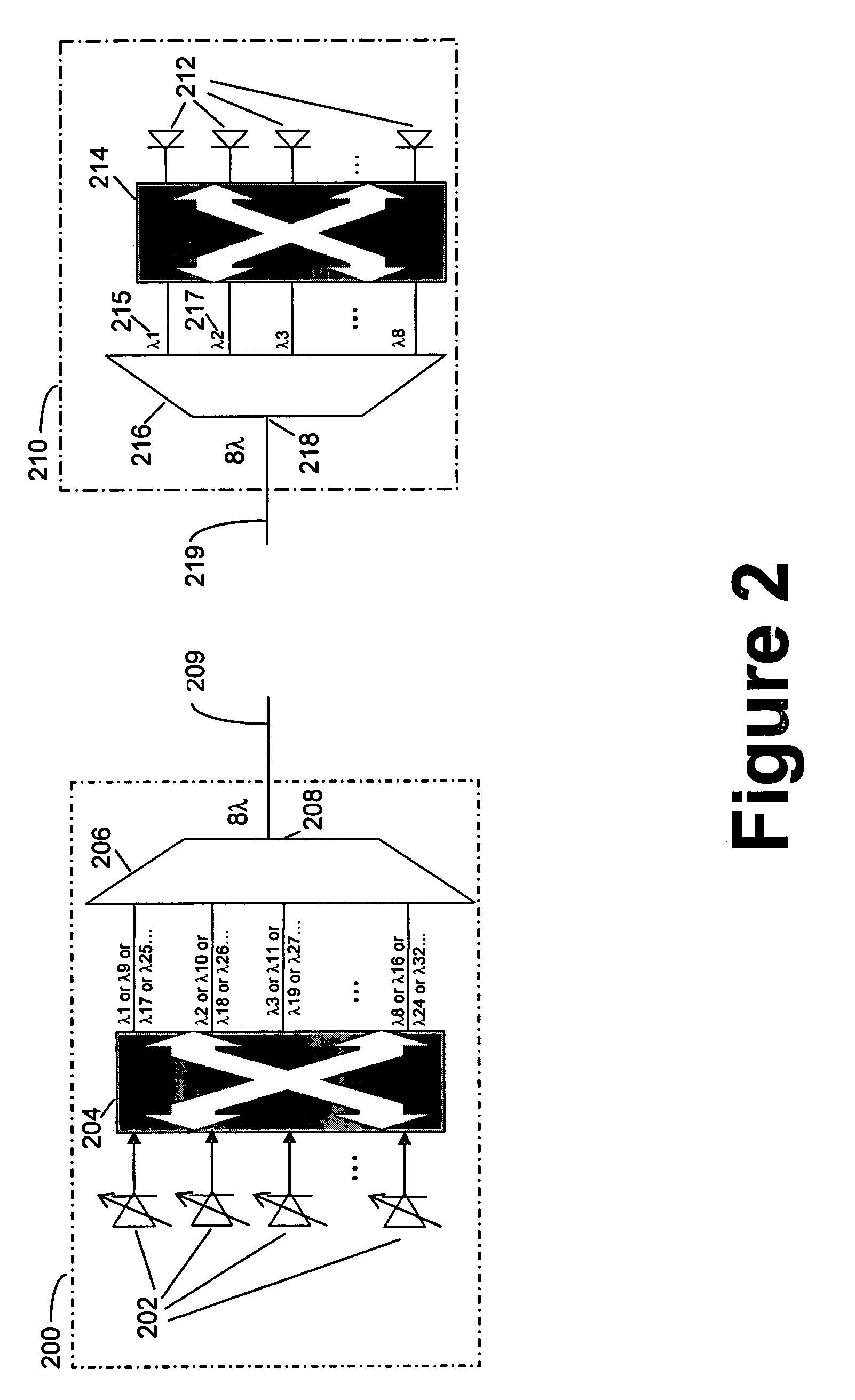Architecture for dynamic connectivity in an edge photonic network architecture
a photonic network and network architecture technology, applied in the field of aggregation of groups of tunable sources in a photonic network, can solve the problems of lack of scalability, large size of oeo switches, high power consumption, etc., and achieve the effect of ready optical connectivity
- Summary
- Abstract
- Description
- Claims
- Application Information
AI Technical Summary
Benefits of technology
Problems solved by technology
Method used
Image
Examples
Embodiment Construction
[0026]Referring to FIG. 1, there is illustrated a transmit cluster 10 having a means of combining optical signal channels as is known in the art. Transmit cluster 10 has a plurality of tunable wavelength optical transmitters 12. These typically may be lasers with associated optical modulators. The outputs of the transmitters 12 are optically connected (note: for the purposes of this specification an optical connection means an optical pathway between devices is established according to means well known in the art including such interconnecting devices as necessary to appropriate optical signal transfer, examples of which include optical fiber, connectors, amplifiers, attenuators, dispersion compensators, and the like) to the inputs of optical power combiner 14. The output 16 of optical power combiner 14 provides an aggregated set of optical channels, however has difficulty scaling to larger numbers of optical transmitters.
[0027]Referring to FIG. 2, there is illustrated a transmit ed...
PUM
 Login to View More
Login to View More Abstract
Description
Claims
Application Information
 Login to View More
Login to View More - R&D
- Intellectual Property
- Life Sciences
- Materials
- Tech Scout
- Unparalleled Data Quality
- Higher Quality Content
- 60% Fewer Hallucinations
Browse by: Latest US Patents, China's latest patents, Technical Efficacy Thesaurus, Application Domain, Technology Topic, Popular Technical Reports.
© 2025 PatSnap. All rights reserved.Legal|Privacy policy|Modern Slavery Act Transparency Statement|Sitemap|About US| Contact US: help@patsnap.com



